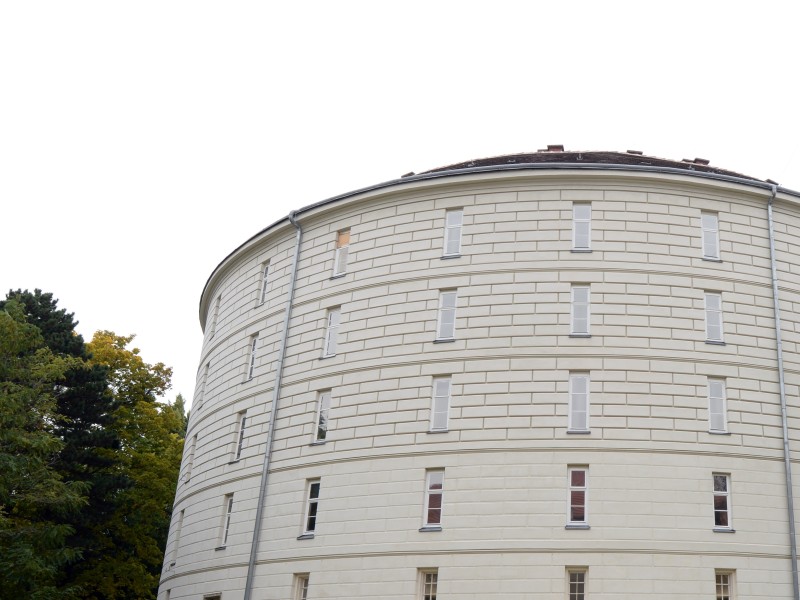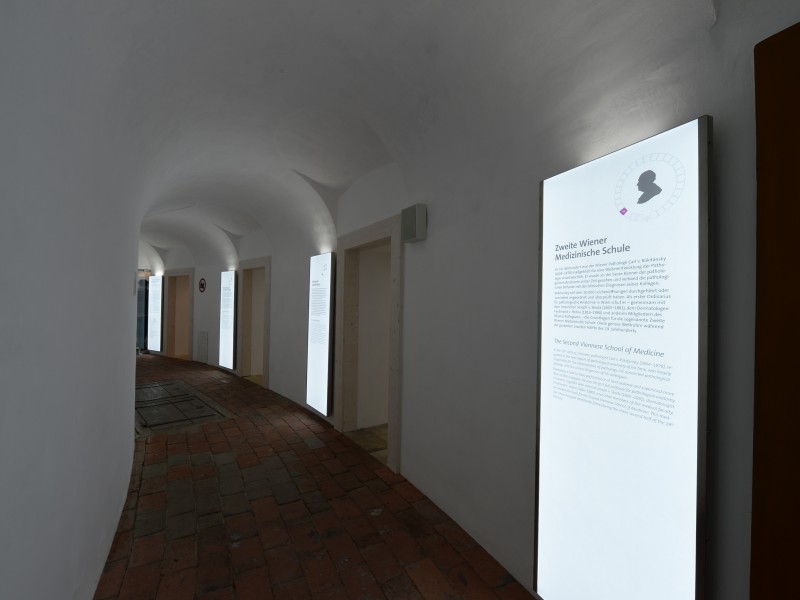The pathological-anatomical collection of NMH Vienna in the Narrenturm ("Fools' Tower")
The only one of its kind in the world, the pathological-anatomical collection in Vienna has served purposes of documentation and research on diseases for more than 200 years. 19 modern showrooms on the ground floor of the renovated “Narrenturm” (Fools’ Tower) provide insights into pathology and the history of diseases. In the course of the renovation of the listed building, the permanent exhibition has been systematically reorganised in accordance with the criteria of pathology for the first time. The objective is to convey the collection’s content not only to doctors, medical students and nurses, but also to schoolchildren and an interested lay public.
The treatment of the topic is adapted to the structure of the spaces in the Fools’ Tower and its old cells, making a visit to the museum a unique experience. In addition to presenting aspects of the history of the Fools’ Tower and of pathology, the exhibition also addresses modern-day diseases.
The showrooms – designed by Viennese architect Martin Kohlbauer – provide a modern setting for the depiction of sensitive issues such as disease and death. The content design was developed in cooperation with medical specialists and implemented with the staff of NHM Vienna. The presentation was planned in consideration of contemporary international guidelines for the treatment of human remains and deliberately refrains from shocking sensationalism.
The only one of its kind in the world, the pathological-anatomical collection in Vienna has served purposes of documentation and research on diseases for more than 200 years. 19 modern showrooms on the ground floor of the renovated “Narrenturm” (Fools’ Tower) provide insights into pathology and the history of diseases. In the course of the renovation of the listed building, the permanent exhibition has been systematically reorganised in accordance with the criteria of pathology for the first time. The objective is to convey the collection’s content not only to doctors, medical students and nurses, but also to schoolchildren and an interested lay public.
The treatment of the topic is adapted to the structure of the spaces in the Fools’ Tower and its old cells, making a visit to the museum a unique experience. In addition to presenting aspects of the history of the Fools’ Tower and of pathology, the exhibition also addresses modern-day diseases.
The showrooms – designed by Viennese architect Martin Kohlbauer – provide a modern setting for the depiction of sensitive issues such as disease and death. The content design was developed in cooperation with medical specialists and implemented with the staff of NHM Vienna. The presentation was planned in consideration of contemporary international guidelines for the treatment of human remains and deliberately refrains from shocking sensationalism.
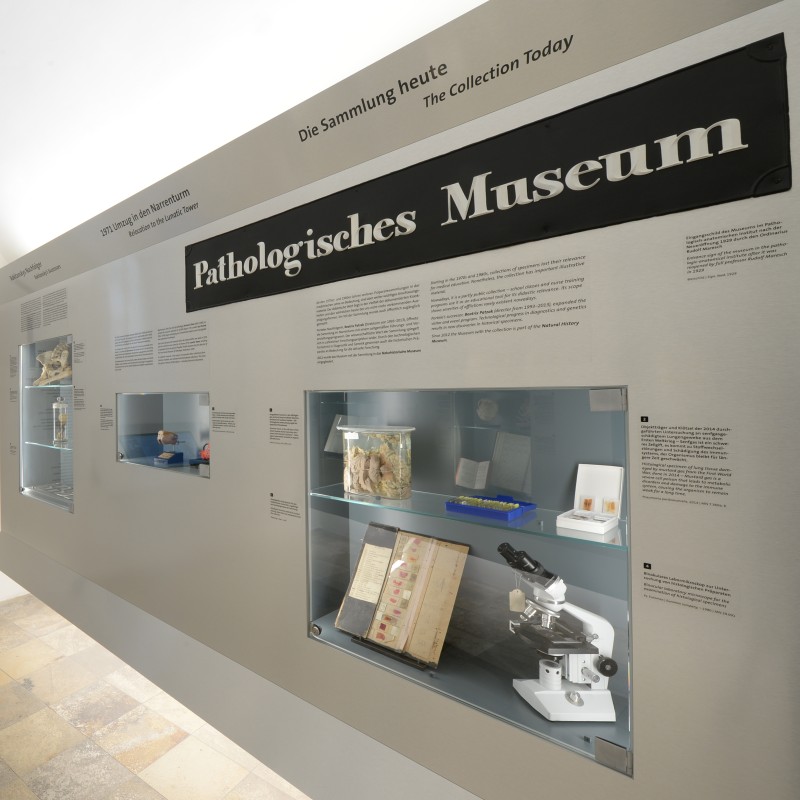
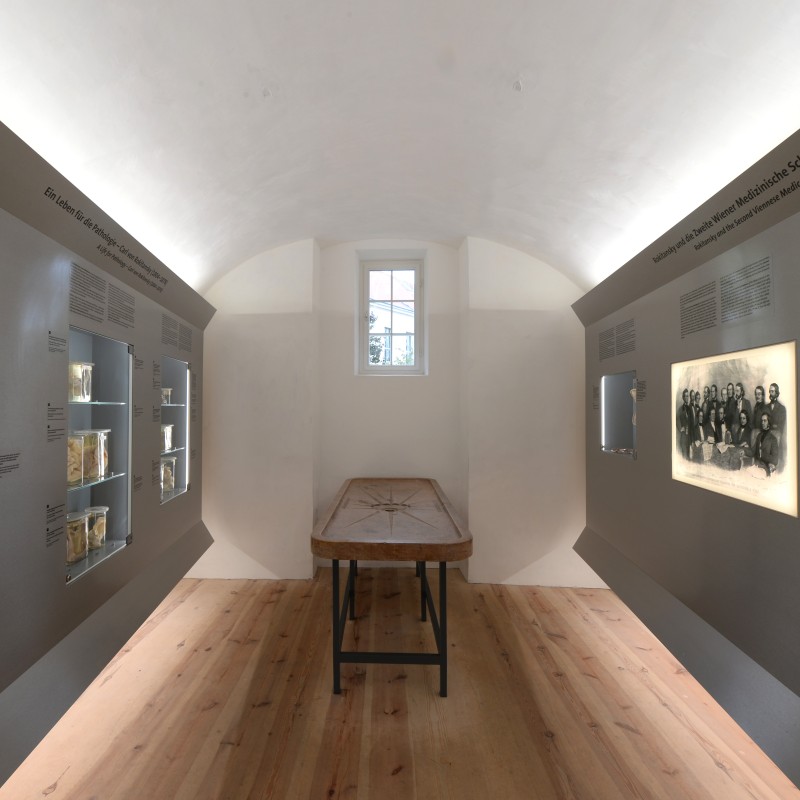
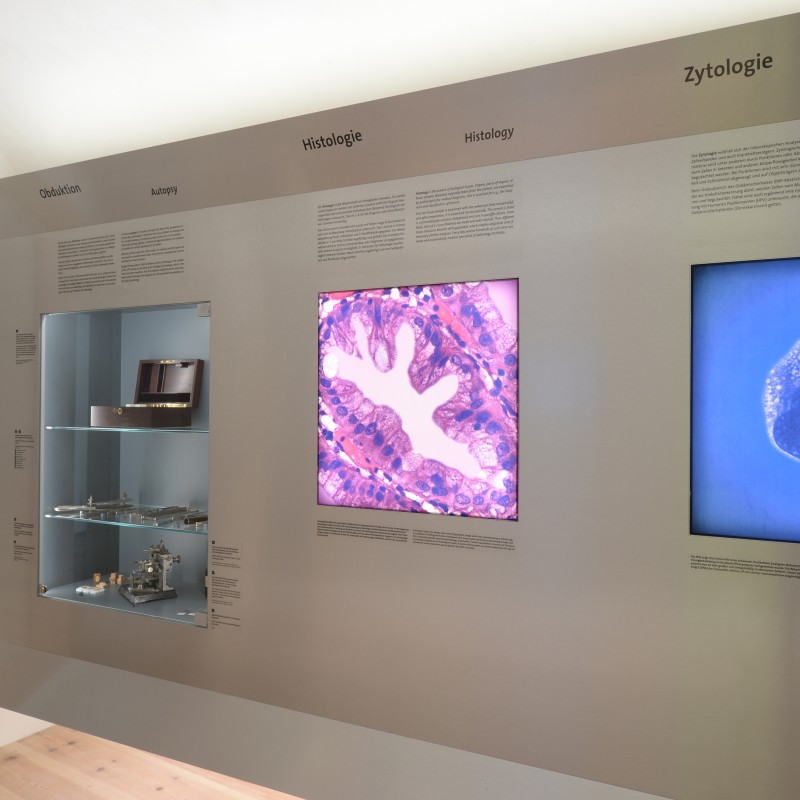
The first five rooms show the history of the collection and of pathology as such, all the way to modern molecular pathology
in the 21st century. An old first-aid kit from the 16th century, as well as artefacts and original textbooks from the 18th
century illustrate this history. The modern disciplines of pathology are also presented at an interactive station, with a
focus on pathological histology.
Aspects of general pathology are depicted in six further rooms. Numerous anatomical specimens from the collection serve to visualise multi-organ afflictions such as inflammations, infections (tuberculosis in particular) and tumours, as well as exogenous and endogenous causes of diseases. Aspects of special pathology and organ pathology are presented in the following seven rooms. The diseases of the various organ systems are visualised using wet specimens and moulages. Life-sized murals explain basic anatomical concepts and interactions. Visitors can also take a peek into their own bodies by using an augmented reality station.
The history of the Fools’ Tower is shown in the next rooms, where two interactive stations also give an impression of the site from before the tower was built, as well as its historical uses. Next to an art installation from the 1990s and a historical forge, three rooms are used for special exhibitions that change periodically. A special new feature of this section is the museum shop, where visitors can find unusual mementos of their visit to the Fools’ Tower. This part of the building can also be rented separately for events.
The aim of the exhibition is to inform interested visitors about diseases, their symptoms and causes, forms and treatment methods. The setting of one of the world’s largest collections of pathological anatomy in the unique atmosphere of the Fools’ Tower makes a visit to the exhibition a memorable experience.
Exhibition design:
Aspects of general pathology are depicted in six further rooms. Numerous anatomical specimens from the collection serve to visualise multi-organ afflictions such as inflammations, infections (tuberculosis in particular) and tumours, as well as exogenous and endogenous causes of diseases. Aspects of special pathology and organ pathology are presented in the following seven rooms. The diseases of the various organ systems are visualised using wet specimens and moulages. Life-sized murals explain basic anatomical concepts and interactions. Visitors can also take a peek into their own bodies by using an augmented reality station.
The history of the Fools’ Tower is shown in the next rooms, where two interactive stations also give an impression of the site from before the tower was built, as well as its historical uses. Next to an art installation from the 1990s and a historical forge, three rooms are used for special exhibitions that change periodically. A special new feature of this section is the museum shop, where visitors can find unusual mementos of their visit to the Fools’ Tower. This part of the building can also be rented separately for events.
The aim of the exhibition is to inform interested visitors about diseases, their symptoms and causes, forms and treatment methods. The setting of one of the world’s largest collections of pathological anatomy in the unique atmosphere of the Fools’ Tower makes a visit to the exhibition a memorable experience.

